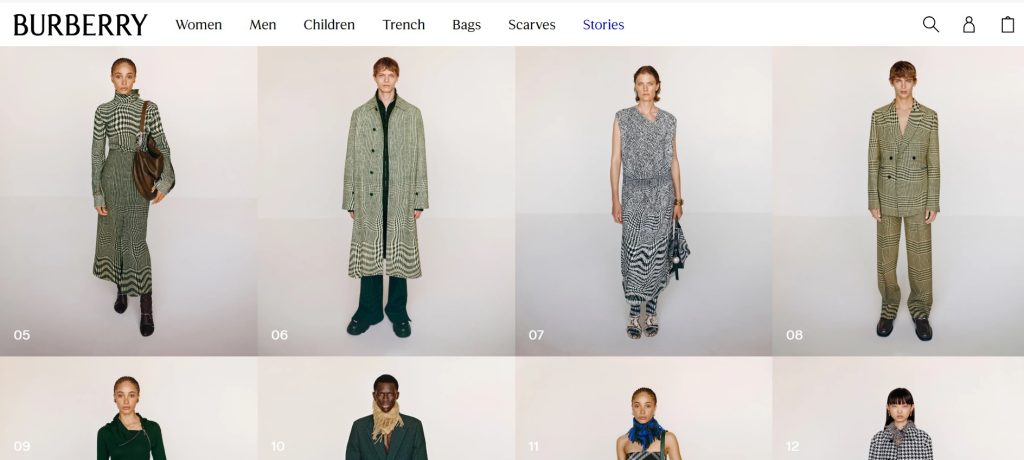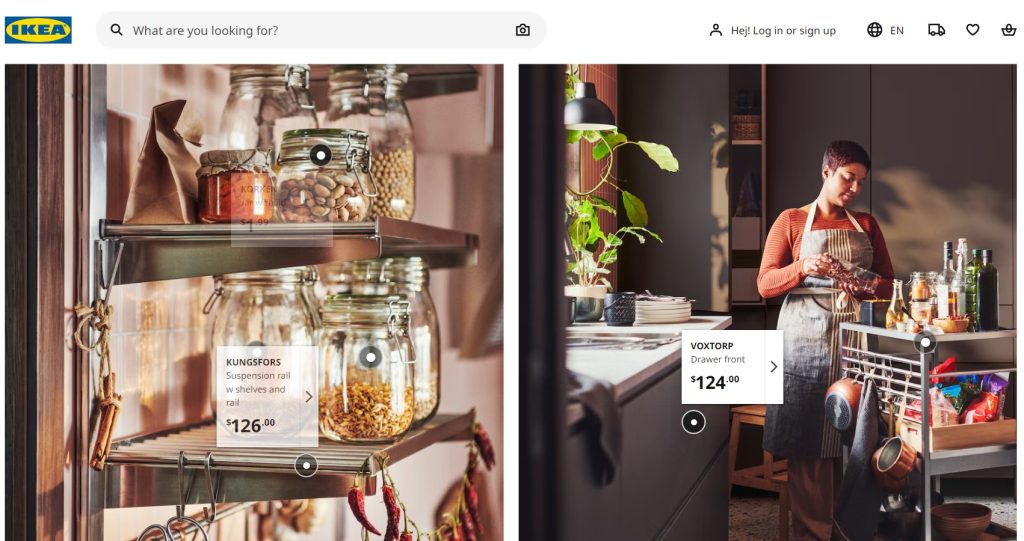Your cart is currently empty!

Capturing Essence: Understanding Lookbooks and 20 Stunning Examples
In the world of visual communication, storytelling extends beyond words. Images have the profound ability to convey emotions, narratives, and identities in ways that text alone cannot. One powerful tool that leverages this capability is the lookbook. As a concept rooted in human-centered design, lookbooks are not just catalogs of products; they are curated experiences that invite audiences into a brand’s universe.
What Is a Lookbook?
A lookbook is a collection of photographs compiled to showcase a designer’s new collection, style, or concept. Traditionally used in the fashion industry, lookbooks present clothing and accessories in styled outfits, offering inspiration and illustrating how pieces can be worn together. However, the use of lookbooks has expanded beyond fashion to include interior design, photography portfolios, and even digital products.
Key Characteristics of a Lookbook:
- Visual Storytelling: Lookbooks weave a narrative through imagery, capturing the mood, theme, or lifestyle associated with the brand.
- Styling and Context: Products are displayed in real-life contexts, helping viewers envision themselves using or wearing them.
- Emotional Connection: By appealing to emotions, lookbooks aim to resonate with the audience on a deeper level, fostering brand affinity.
- Cohesive Aesthetics: A consistent visual style ties the collection together, reflecting the brand’s identity and values.
Purpose of a Lookbook:
- Inspiration: Provide ideas on how to style or use products.
- Promotion: Launch new collections or highlight seasonal offerings.
- Brand Communication: Convey the brand’s ethos, vision, and aesthetic.
- Engagement: Invite audiences to explore and interact with the brand’s world.
20 Stunning Lookbook Examples
Below, we explore 20 exemplary lookbooks that embody the principles of effective design and storytelling. Each one offers insights into how visual narratives can captivate and inspire.
**1. Burberry’s Seasonal Lookbook

Overview: Burberry’s lookbook combines classic British elegance with modern flair.
Highlights:
- Visual Cohesion: Consistent color palettes reflecting seasonal tones.
- Storytelling: Models depicted in iconic London settings, reinforcing brand heritage.
- User Engagement: Interactive elements in digital versions allow for an immersive experience.
**2. IKEA’s Home Furnishing Lookbook

Overview: IKEA showcases room setups that blend functionality with Scandinavian design simplicity.
Highlights:
- Real-Life Context: Rooms are styled to reflect various lifestyles and needs.
- Accessibility: Emphasis on affordability and practical solutions.
- Interactive Catalog: Digital lookbooks offer augmented reality features to visualize products in one’s own space.
**3. Apple’s Product Lookbook

Overview: Apple’s minimalist approach highlights product design and innovation.
Highlights:
- Sleek Aesthetics: Clean layouts with ample white space focus attention on the products.
- Emotional Appeal: Imagery conveys the joy and creativity enabled by the devices.
- Consistency: Aligns with Apple’s overall branding and design philosophy.
**4. Free People’s Bohemian Fashion Lookbook

Overview: Free People captures a free-spirited lifestyle through its boho-chic collections.
Highlights:
- Atmospheric Imagery: Outdoor settings evoke a sense of adventure and wanderlust.
- Styling Tips: Outfits are layered and accessorized, providing inspiration.
- Narrative Flow: The lookbook tells a story of a journey or experience.
**5. Tesla’s Vehicle Lookbook
Overview: Tesla presents its electric vehicles as symbols of innovation and sustainability.
Highlights:
- Futuristic Design: Images emphasize sleek lines and advanced technology.
- Lifestyle Integration: Photos depict vehicles in everyday scenarios, highlighting practicality.
- Environmental Message: Subtle cues reinforce the brand’s commitment to eco-friendly solutions.
**6. Patagonia’s Outdoor Apparel Lookbook
Overview: Patagonia combines product showcases with environmental activism.
Highlights:
- Authentic Settings: Products are shown in use by real adventurers and athletes.
- Storytelling: Each image often includes a backstory or quote, deepening engagement.
- Call to Action: Encourages viewers to participate in conservation efforts.
**7. Anthropologie’s Home and Fashion Lookbook

Overview: Anthropologie merges eclectic styles in both clothing and home décor.
Highlights:
- Eclectic Mix: Combines vintage and modern elements for a unique aesthetic.
- Texture and Detail: Close-up shots highlight craftsmanship and materials.
- Mood Creation: Imagery evokes warmth and comfort, inviting viewers into the brand’s world.
**8. Nike’s Athletic Wear Lookbook
Overview: Nike’s lookbook motivates with high-energy visuals of athletes in action.
Highlights:
- Dynamic Imagery: Captures movement and intensity, embodying athleticism.
- Empowerment Themes: Inspires viewers to push their limits.
- Diversity: Showcases athletes of various backgrounds, promoting inclusivity.
**9. Chanel’s Haute Couture Lookbook
Overview: Chanel presents high-fashion pieces with timeless elegance.
Highlights:
- Artistic Photography: Uses dramatic lighting and settings to enhance luxury.
- Attention to Detail: Close-ups of intricate designs and fabrics.
- Editorial Style: Reads like a high-fashion magazine, elevating the brand’s prestige.
**10. Adobe’s Creative Suite Lookbook
Overview: Adobe showcases its software capabilities through creative works.
Highlights:
- User-Created Content: Features artwork and designs made by users.
- Inspirational: Demonstrates the possibilities enabled by Adobe tools.
- Educational: Provides insights into techniques and processes.
**11. Lululemon’s Athleisure Lookbook
Overview: Lululemon highlights the blend of athletic wear and casual fashion.
Highlights:
- Lifestyle Focus: Depicts models in everyday activities, emphasizing versatility.
- Community Feel: Showcases group settings, promoting a sense of belonging.
- Wellness Theme: Integrates elements of mindfulness and well-being.
**12. Warby Parker’s Eyewear Lookbook
Overview: Warby Parker combines fashion-forward eyewear with a social mission.
Highlights:
- Stylish Simplicity: Clean designs appeal to modern aesthetics.
- Personality: Frames are matched with individual styles and character traits.
- Philanthropy: Highlights the brand’s commitment to donating glasses.
**13. Zara’s Fast Fashion Lookbook
Overview: Zara presents current trends with a high-fashion twist.
Highlights:
- Timeliness: Rapid updates reflect the latest fashion trends.
- Urban Settings: Imagery often features cityscapes, resonating with a cosmopolitan audience.
- Minimalist Layout: Focuses on the clothing without distractions.
**14. Canon’s Photography Equipment Lookbook
Overview: Canon showcases its cameras and lenses through stunning photographs.
Highlights:
- Visual Quality: High-resolution images demonstrate product capabilities.
- Variety of Genres: Includes landscapes, portraits, and action shots.
- Technical Specs: Provides detailed information alongside visuals.
**15. Muji’s Minimalist Product Lookbook
Overview: Muji emphasizes simplicity and functionality in its home and lifestyle products.
Highlights:
- Clean Design: Minimalist layouts reflect the brand’s philosophy.
- Practicality: Shows products in everyday use, highlighting utility.
- Consistent Aesthetic: Neutral colors and simple forms create cohesion.
**16. LEGO’s Creative Play Lookbook
Overview: LEGO inspires imagination through creative builds.
Highlights:
- Imaginative Scenes: Displays elaborate constructions to spark ideas.
- User Engagement: Features creations from the LEGO community.
- Educational Aspect: Encourages learning through play.
**17. Urban Outfitters’ Youthful Fashion Lookbook
Overview: Urban Outfitters targets a young audience with trendy and edgy styles.
Highlights:
- Bold Imagery: Vibrant colors and dynamic poses capture attention.
- Cultural References: Integrates music, art, and pop culture elements.
- Interactive Elements: Digital lookbooks may include clickable content.
**18. Tesla Solar’s Energy Solutions Lookbook
Overview: Showcases solar panels and energy storage solutions for homes.
Highlights:
- Integration with Lifestyle: Depicts products as part of modern living.
- Environmental Focus: Emphasizes sustainability benefits.
- Sleek Design: Aligns with Tesla’s overall aesthetic.
**19. H&M’s Conscious Collection Lookbook
Overview: Highlights sustainable fashion options.
Highlights:
- Eco-Friendly Materials: Focus on organic and recycled fabrics.
- Storytelling: Shares the journey of how products are made.
- Call to Action: Encourages responsible consumer choices.
**20. National Geographic’s Photojournalism Lookbook
Overview: A collection of powerful images from around the world.
Highlights:
- Visual Impact: Striking photographs tell compelling stories.
- Educational Content: Provides context and information about subjects.
- Conservation Message: Raises awareness about environmental and cultural issues.
Creating an Effective Lookbook
To craft a lookbook that resonates with audiences, consider the following human-centered design principles:
1. Know Your Audience
- Understand Preferences: Tailor the visual style to appeal to your target demographic.
- Cultural Sensitivity: Be mindful of cultural nuances and representations.
2. Tell a Story
- Narrative Arc: Develop a clear beginning, middle, and end.
- Emotional Connection: Use imagery that evokes feelings and memories.
3. Consistency Is Key
- Visual Cohesion: Maintain a consistent color palette, typography, and layout.
- Brand Alignment: Reflect your brand’s identity and values throughout.
4. High-Quality Imagery
- Professional Photography: Invest in high-resolution, well-composed images.
- Attention to Detail: Ensure styling, lighting, and settings enhance the products.
5. Accessibility
- Clear Layouts: Design with readability in mind, avoiding clutter.
- Digital Considerations: Optimize for various devices and screen sizes.
6. Interactive Elements (for Digital Lookbooks)
- Engagement Features: Incorporate videos, clickable hotspots, or augmented reality.
- User Experience: Ensure navigation is intuitive and seamless.
Conclusion
A lookbook is more than a visual catalog; it’s a powerful storytelling tool that bridges the gap between products and consumers. By thoughtfully curating images that reflect a brand’s essence, lookbooks engage audiences on an emotional level, inspiring them and fostering a deeper connection.
In the spirit of human-centered design, creating an effective lookbook involves empathy, creativity, and strategic thinking. It’s about understanding your audience, crafting compelling narratives, and delivering an experience that resonates.
Embrace the art of visual storytelling through lookbooks. By weaving together imagery, emotion, and purpose, you invite your audience into your brand’s world, creating connections that transcend mere transactions.
Leave a Reply